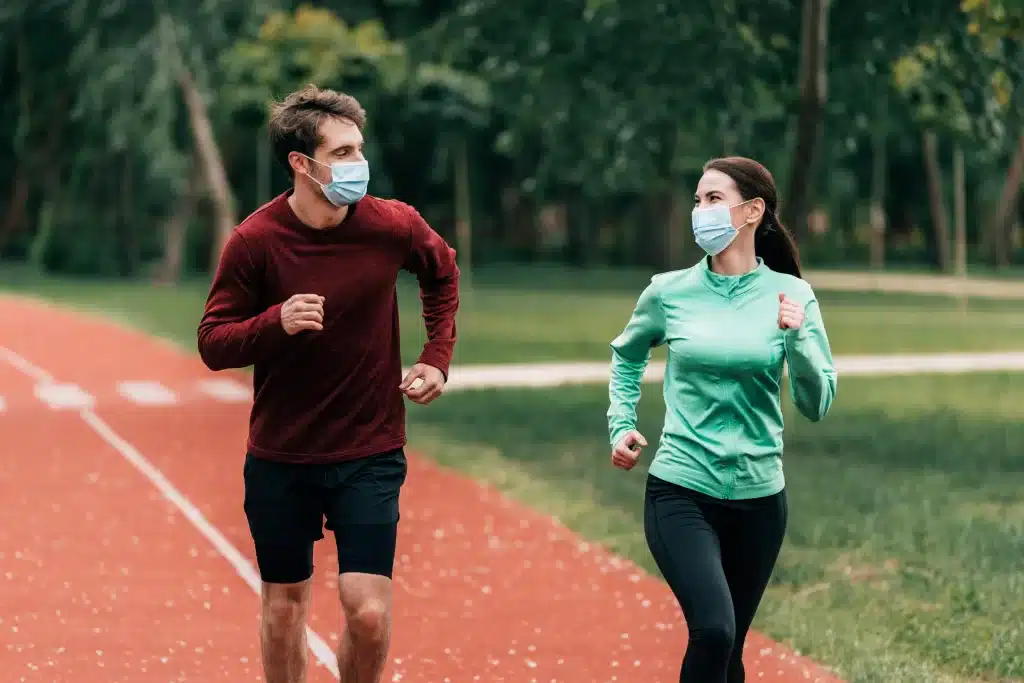Running in cold weather presents unique challenges, with the risk of cold air causing discomfort or respiratory issues being a major concern. That’s where runners’ masks for cold weather come in as an effective solution. These masks help to warm and humidify the air before it enters our lungs, reducing the likelihood of cold-induced asthma or bronchitis. They can also protect our face from harsh conditions and provide a psychological feeling of warmth that can make a winter run more enjoyable.
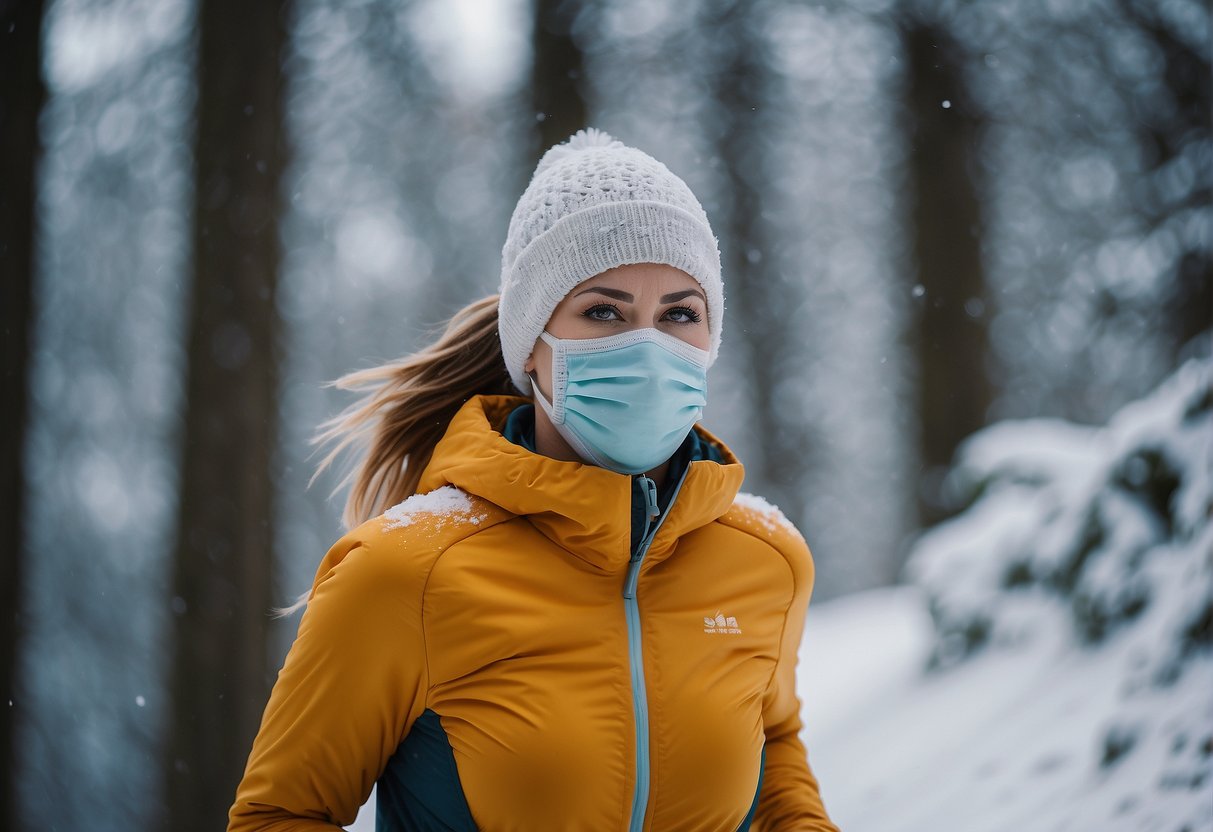
While the core idea behind a runners’ mask for cold weather is straightforward, the variety of available options means there’s a suitable mask for every preference and condition. A good mask balances insulation with breathability, fits snugly without restricting movement and can withstand the rigors of frequent use. Additionally, it’s essential to understand the right way to layer clothing and choose complementary gear to enhance our overall comfort and performance when running in the cold.
Key Takeaways
- Runners’ masks help warm and humidify air, reducing respiratory issues in cold weather.
- A vast selection of masks allows for personalization based on individual needs and conditions.
- Proper use and maintenance of a mask complement a well-thought-out layering strategy.
Quick Navigation
Benefits of Wearing a Runner’s Mask in Cold Weather
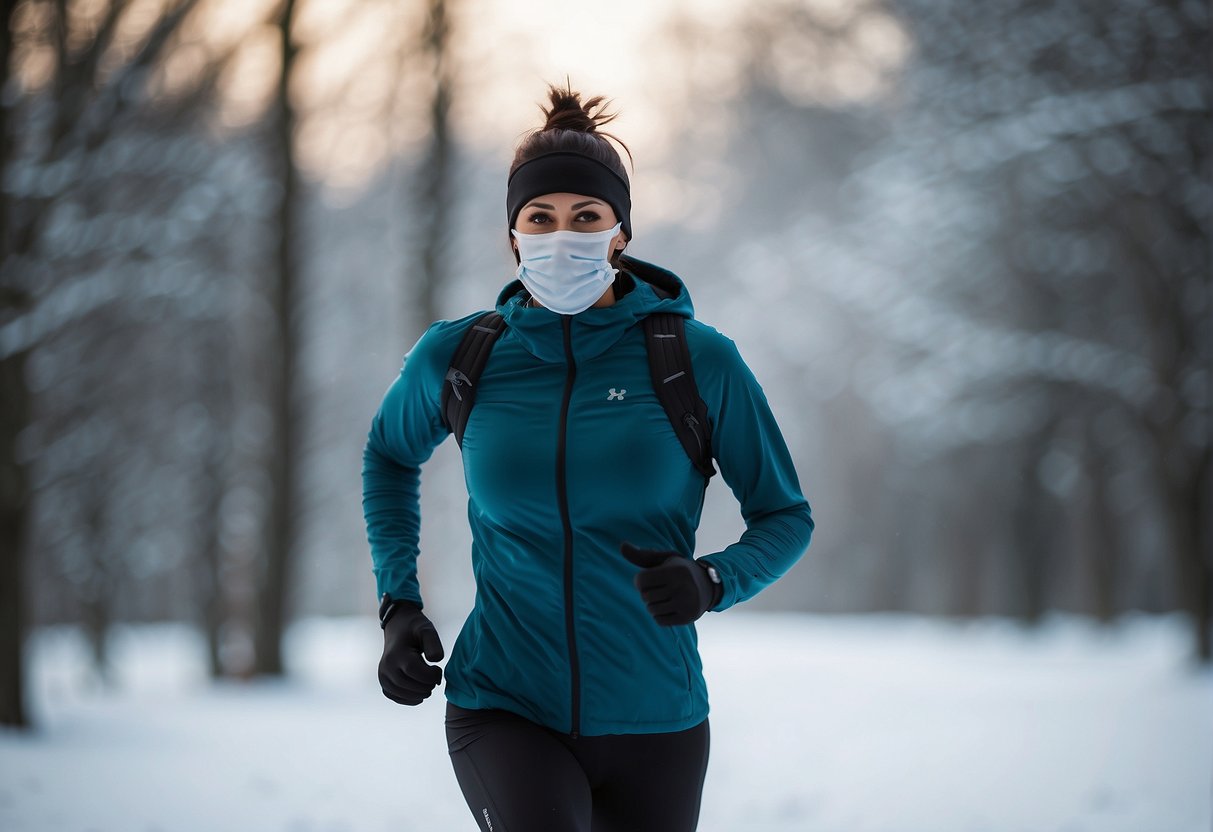
Wearing a runner’s mask in cold weather is essential to protect ourselves from harsh elements and to enhance our running performance. Let’s explore the key benefits.
Protection from Cold Air and Wind Chill
When we run in cold temperatures, the frigid air can take a toll on our respiratory system. A runner’s mask protects against cold air and wind chill, shielding our face and lungs. This protection is crucial as it helps reduce the risk of cold-induced respiratory issues.
Maintaining Body Temperature
Our body heat is precious when we’re braving the cold. A mask designed for running aids in retaining body heat that would otherwise be lost through our breath. This retention keeps the face warm and helps stabilize our core temperature, making for a more comfortable run.
Moisture Control and Breathable Material
A suitable mask for cold weather running should be made of breathable material that wicks away moisture. It manages the moisture our breath and sweat produce, preventing the wet and cold sensation that could lead to discomfort. Breathable materials are pivotal for maintaining warmth while preventing overheating and ensuring we remain dry throughout our runs.
Choosing the Right Runners Mask
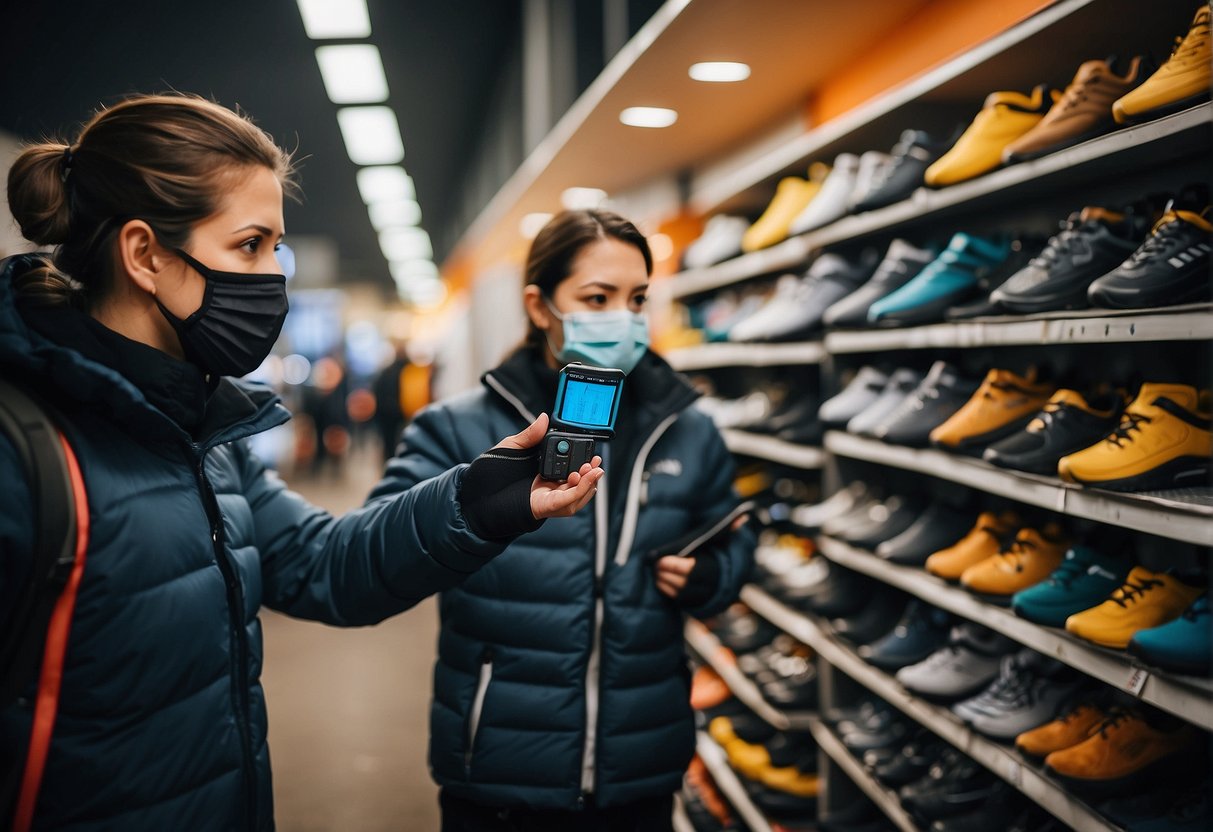
When we tackle the chill of winter runs, selecting the right mask is crucial for comfort and performance. Our focus is on three essential aspects: proper criteria for selection, optimal materials, and the importance of fit and comfort.
Criteria for the Best Cold Weather Running Masks
The best cold-weather running masks should align with our specific thermal regulation and breathability needs. We look for masks with breathable vents to prevent moisture buildup and maintain airflow, while adjustable straps ensure the mask stays in place during vigorous movement. Here’s a quick rundown:
- Breathability: Essential to avoid overheating and condensation
- Insulation: Sufficient to guard against cold air
- Moisture-Wicking: To keep our face dry and warm
- Adjustable Fit: For a snug and secure feel without slippage
Best Materials for Warmth and Breathability
Merino wool and synthetic fabric both have unique advantages. Merino wool is renowned for its natural insulation, moisture-wicking properties, and softness, making it a top-notch choice. Synthetic fabrics, often designed for performance wear, provide excellent breathability and drying speed. Each material offers a blend of warmth and ventilation necessary for cold weather:
- Merino Wool: Natural, warm, and moisture-wicking
- Synthetic Fabrics: Quick-drying, lightweight, and often more durable
Fit and Comfort Features
Comfort defines the effectiveness of the best masks. We want our running mask to feel like a second skin, the ideal blend of snug and non-restrictive. Stretchy material is our ally here, allowing for a full range of motion without discomfort. Below are features we consider non-negotiable for our running masks:
- Soft Interior: A smooth, non-irritating lining against our skin
- Ergonomic Design: Contours that complement the face shape
- Adjustability: Straps or toggles that offer a customizable fit
By prioritizing these attributes, we can find a running mask that offers optimal performance in cold weather.
Recommended Runners Masks for Cold Weather
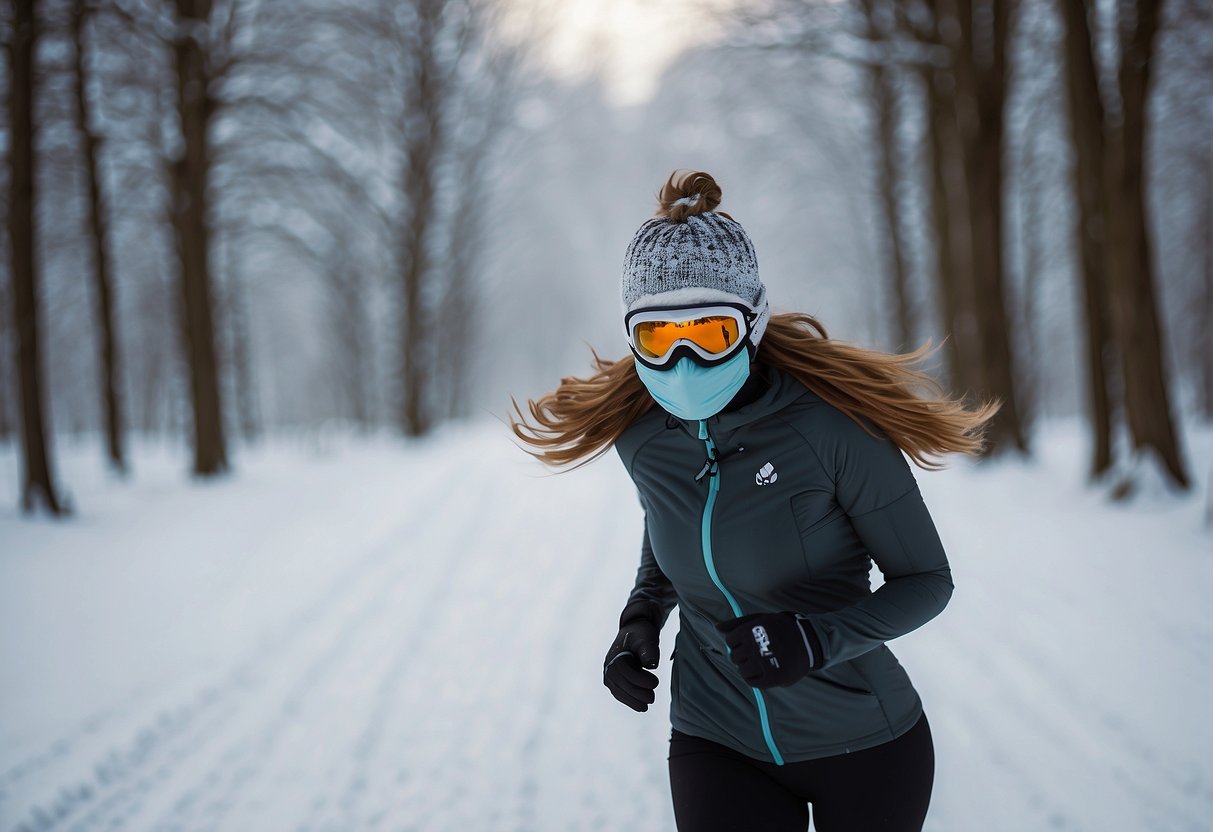
Prioritize breathability and insulation when selecting runner’s masks for cold weather. Here, we present top picks for daily cold conditions and specialized options for extreme weather to ensure comfort and performance.
Top Picks for Cold Weather Masks
- Nike Strike Snood: An excellent choice for cold-weather running, the Nike Strike Snood features a soft fleece lining offering warmth around the neck while maintaining breathability and moisture-wicking capabilities. Its mesh over the mouth allows for easy breathing and avoids the feeling of dampness due to condensation.
- Neck Gaiter Mask: A neck gaiter mask can’t be beaten for versatility. Ours can be pulled up to cover the mouth and nose when needed and rolled down easily when not. It’s a lightweight option providing adequate protection in moderately cold conditions.
Specialized Masks for Extreme Conditions
- Nike Stride Snood: The Nike Stride Snood is our go-to for harsh, windy conditions. This snood provides full neck, lower face, and ears coverage. The Dri-FIT technology helps manage sweat while staying securely in place with lock-down coverage over the nose.
- Adidas Alphaskin Balaclava: This specialized balaclava is designed to cover the entire face while leaving a strategic opening for the eyes. The Adidas Alphaskin Balaclava is ideal for sub-zero temperatures, ensuring a snug fit and dry skin with its moisture-wicking fabric.
- Full-Face Ski Mask: For extreme cold and wind, a full-face ski mask provides the highest level of protection. They cover the head, neck, and face, exposing only the eyes. Many are designed with breathable material near the mouth for increased airflow, making them suitable for the highest-intensity workouts in the coldest environments.
Layering Strategies for Runners
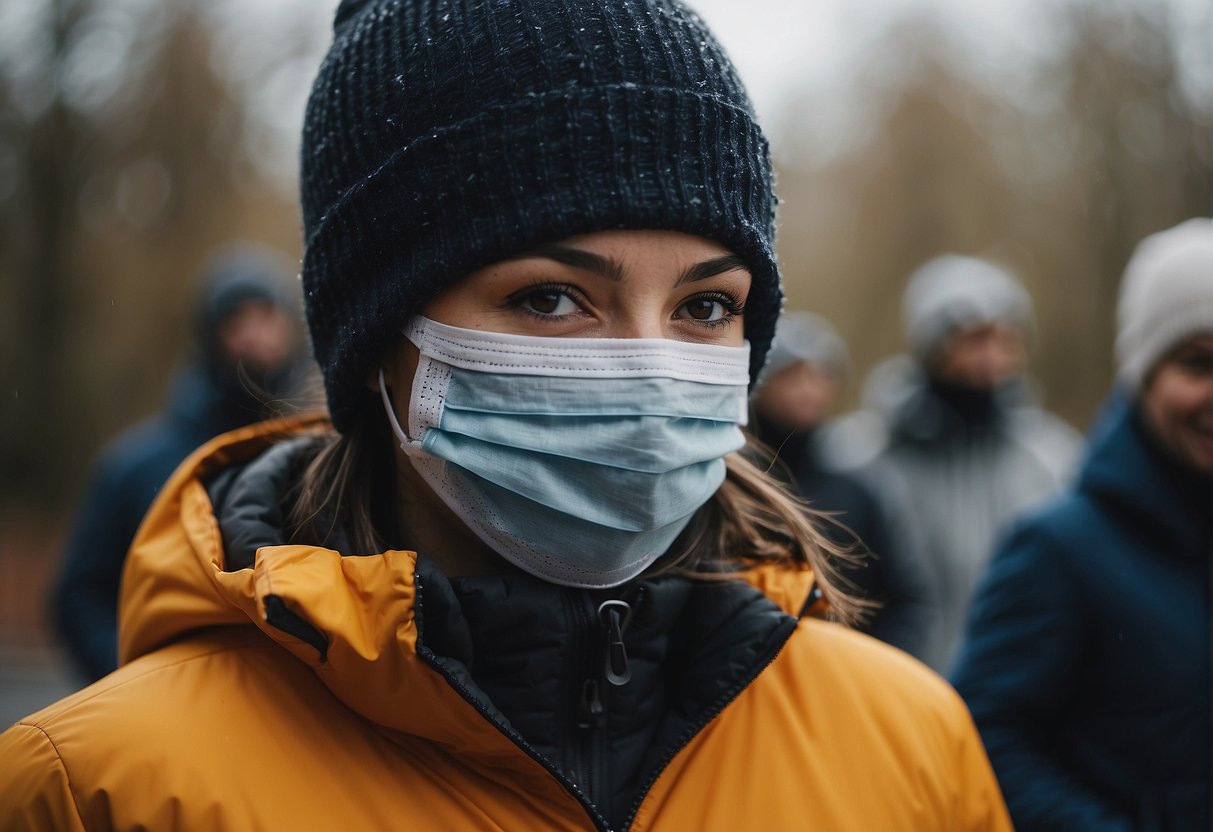
When we set out for a run in cold weather, our clothing strategy can make the difference between a comfortable workout and a challenging experience. Selecting the appropriate layers that provide warmth, regulate body temperature, and shielding from the elements is crucial.
Base Layer Essentials
The base layer is our first defense against the cold and wicks moisture away from our skin. For this layer, we prefer materials like merino wool or synthetic fibers that are breathable and have quick-drying properties. A base layer must fit snugly to maximize moisture management.
Middle Layer for Insulation
Our middle layer primarily provides insulation. This layer traps heat and is often made of fleece or wool. Depending on the temperature, we might opt for thinner or thicker materials, but ensuring this layer isn’t too tight is key; we need to allow for proper ventilation and air circulation, which helps regulate our body temperature.
Outer Layer for Wind and Moisture Protection
Finally, our outer layer must shield us from wind and precipitation without compromising the breathability established by our other layers. We look for jackets that are water-resistant yet breathable. Features like vent zips can increase airflow, especially as our body heats up during a run. The outermost layer should be roomy enough to accommodate the layers beneath without restricting movement.
Additional Cold Weather Gear for Runners
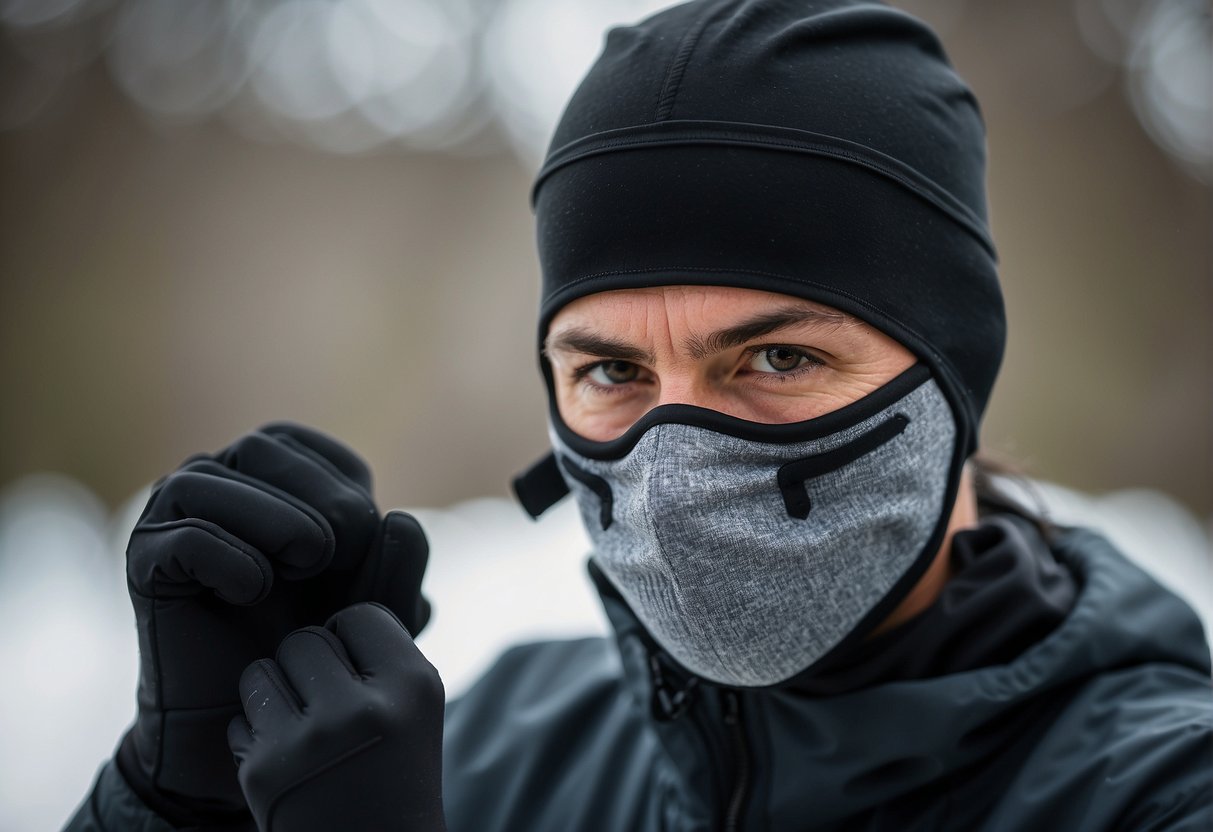
When we take on the challenge of running in the cold, it’s crucial to layer effectively and choose the right materials. Beyond a runner’s mask for cold weather, there are key pieces of gear that can optimize comfort and performance.
Headwear: We recommend a thermal hat or a wool hat. Wool is excellent at retaining heat even when wet, and a thermal hat is designed to trap heat close to the body.
Upper Body: Layering starts with a moisture-wicking base layer, topped with an insulating layer such as a fleece. We should finish with a wind-resistant and waterproof outer shell.
Hands: A pair of gloves is essential. For colder conditions, consider gloves with a thermal lining.
Lower Body: We should look for a pair of tights specifically made for running. These should be thermal and moisture-wicking to keep us warm and dry. For extremely cold temperatures, a second insulating layer may be added.
Feet: We should wear warm socks that are thick enough to provide insulation but not so thick that they compromise the fit of our running shoes. Materials like merino wool or synthetic blends offer the best warmth and moisture control balance.
Shoes: Traction is key, so we must ensure our running shoes have a good grip. Shoes with water-resistant properties are also beneficial for slushy conditions.
| Gear Item | Material Recommendations | Notes |
|---|---|---|
| Hat | Wool, Thermal | Retains heat, even when damp |
| Upper Body | Moisture-wicking layers | Includes base, insulating, and outer shell |
| Gloves | Thermal lining | For extra cold protection |
| Tights | Thermal, Moisture-wicking | Essential base layer for legs |
| Socks | Merino wool, Synthetic | Warmth plus moisture control |
| Running Shoes | Good grip, Water-resistant | Ensures safety and dryness |
Layering appropriately with these items will keep us warm and help us maintain our running performance throughout the winter months.
Health Considerations in Cold Weather Running
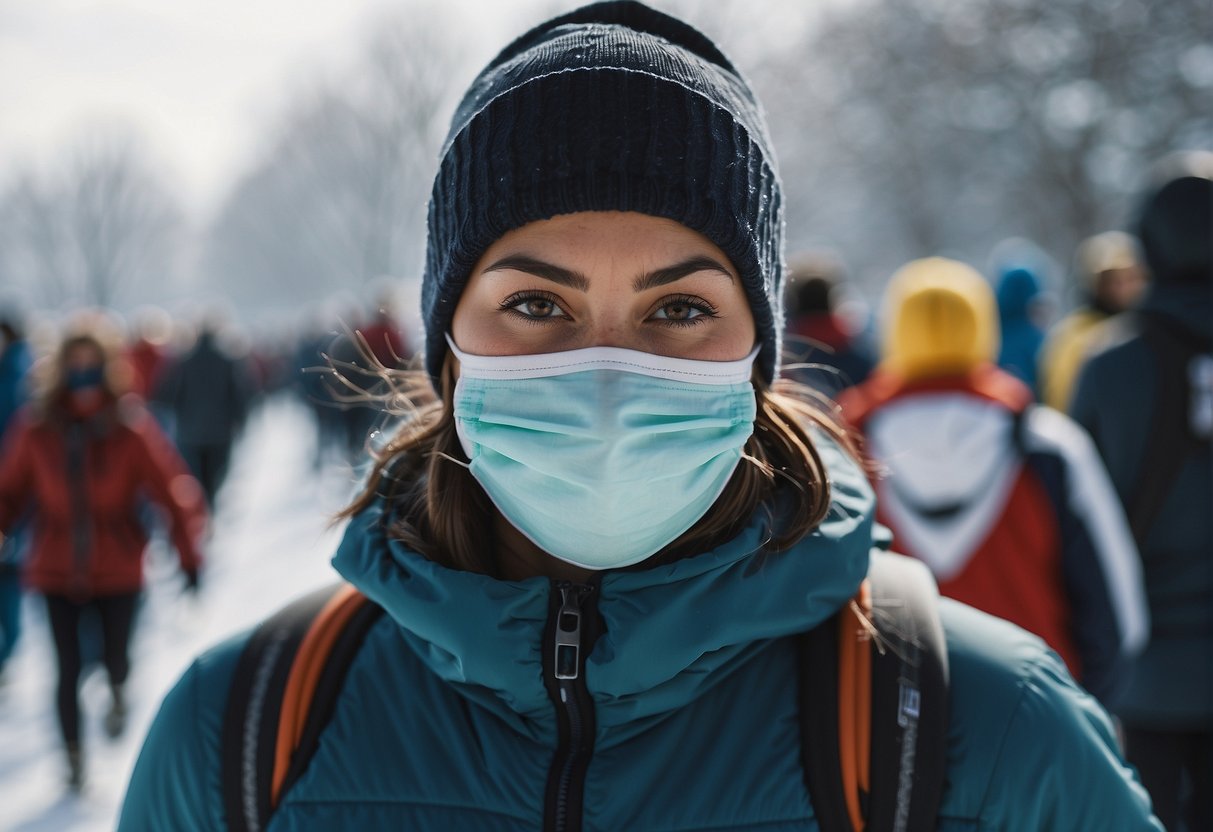
When we run in cold weather, our primary focus should be maintaining body temperature, protecting the skin, and ensuring safety to prevent cold-related health complications.
Preventing Cold-Induced Asthma
Asthma patients face unique challenges during cold days, as freezing temperatures can trigger asthma symptoms or cold-induced bronchoconstriction. To help prevent this:
- We should warm up indoors to prepare our lungs for the cold air.
- Using a face covering or a mask can help to warm and humidify the air we breathe.
Skin Protection and Care
In very cold weather, our skin requires extra attention due to the risk of frostbite and irritation. Here’s how we can protect it:
- Apply a thick, fragrance-free moisturizer on exposed skin to create a protective barrier.
- Wear layers, including wind-resistant materials, to shield against harsh conditions.
Safety Tips for Winter Running
Running safely on cold days involves thoughtful preparation. Our safety guidelines include:
- Dress in reflective and bright-colored clothing to improve visibility.
- Choose footwear with adequate grip to prevent slips and falls on icy surfaces.
- Stay hydrated, even if we feel less thirsty than in hot weather.
Practical Tips for Cold Weather Running
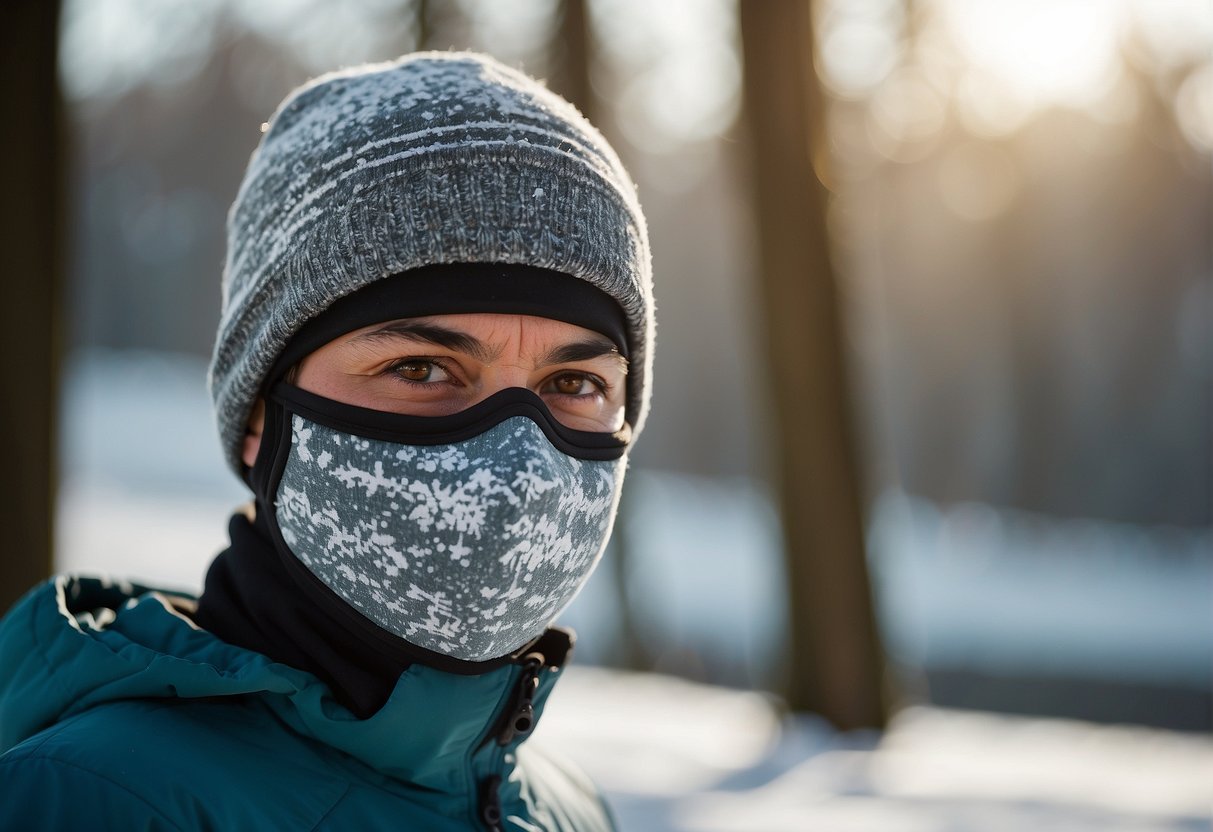
When we tackle cold weather running, paying attention to our bodies both before and after we head out is crucial. We’ll need to adjust our warm-up routines, how we care for ourselves post-run, and what we consume for hydration and nutrition. Our success and comfort depend on these adjustments.
Warm-Up Routines
In cold conditions, a thorough warm-up is more important than ever. We need to get our blood flowing to prevent injuries. Here are some specifics to consider:
- Begin with dynamic stretches indoors to increase our body temperature.
- Opt for a 10-15 minute light jog or brisk walk before hitting our main pace.
After-Run Care
Once our run is complete, we should not neglect after-run care, especially when the air is dry and cold. This includes:
- Dry Clothing: Change into dry clothes immediately to avoid getting cold.
- Stretch: Engage in gentle stretching to avoid tightness and promote blood flow.
Hydration and Nutrition
While we may not feel as thirsty in cold weather, staying hydrated is still good. Eating well is also key for recovery. Some specifics include:
- Warm Water: Drinking warm water can prevent core body temperature from dropping.
- Balanced Meals: Consume meals with a good balance of protein and carbs for recovery.
Understanding Weather Impact on Running
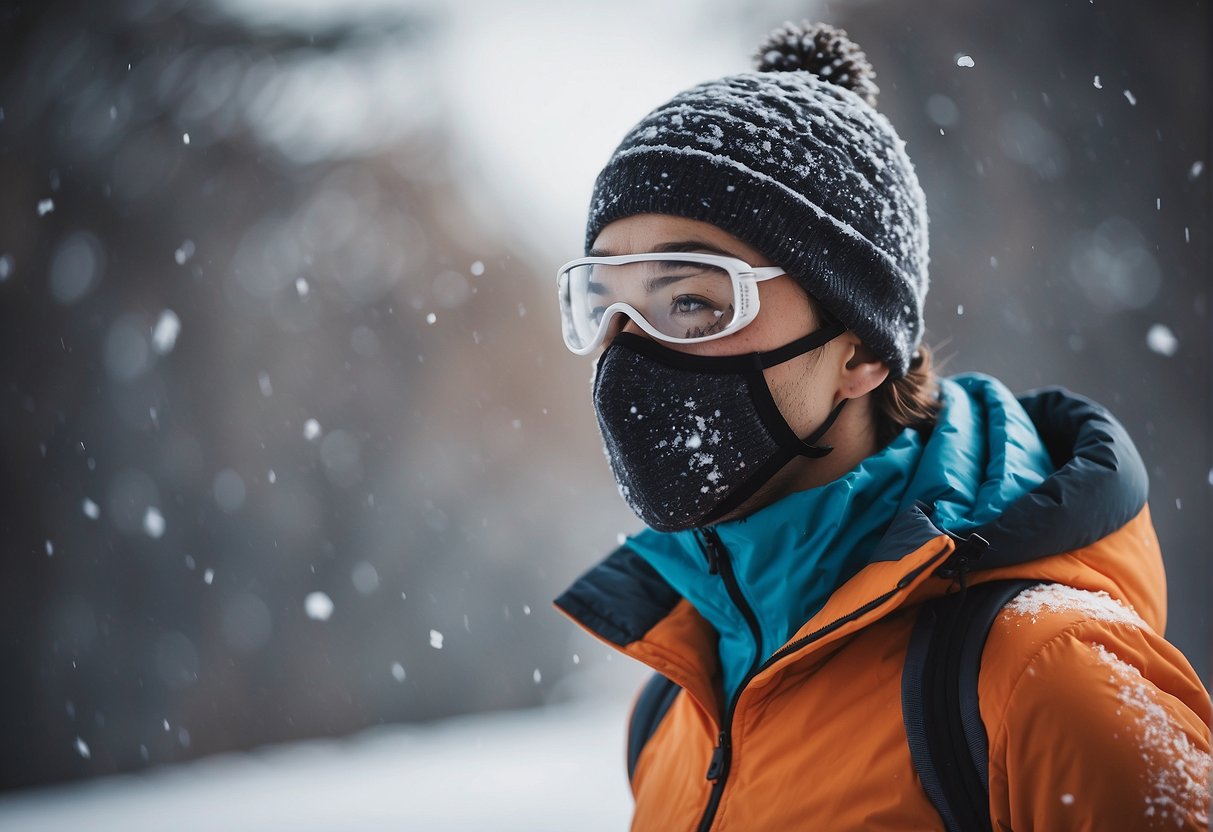
As runners, we must pay close attention to the weather, particularly in the colder months, because it can greatly influence our performance and comfort. Changes in weather conditions require us to adapt our gear and strategies to maintain our fitness levels while staying safe.
Reading Weather Conditions
When we approach outdoor running, we often look at the temperature first. In the winter months, degrees Fahrenheit can be a deceptive indicator of how cold it feels. We need to consider wind chill, as a strong, cold wind can penetrate our layers and reduce our core body temperature, making it feel much colder than the actual air temperature. On windy days, our route choice can help us minimize exposure to gusts and prevent potential issues such as windburn or frostbite.
Adapting to Temperature Fluctuations
Layering is essential for managing temperature fluctuations. In colder weather, we start with a moisture-wicking base layer to keep sweat away from our skin, add an insulating layer for warmth, and top with a windproof and waterproof shell layer. This system allows us to adjust our insulation as needed during a run. On particularly cold days, a runner’s mask designed for cold weather can protect our face from the biting effects of cold wind and warm the air before it enters our lungs, making breathing easier and reducing the risk of respiratory irritation.
Maintaining Your Running Mask
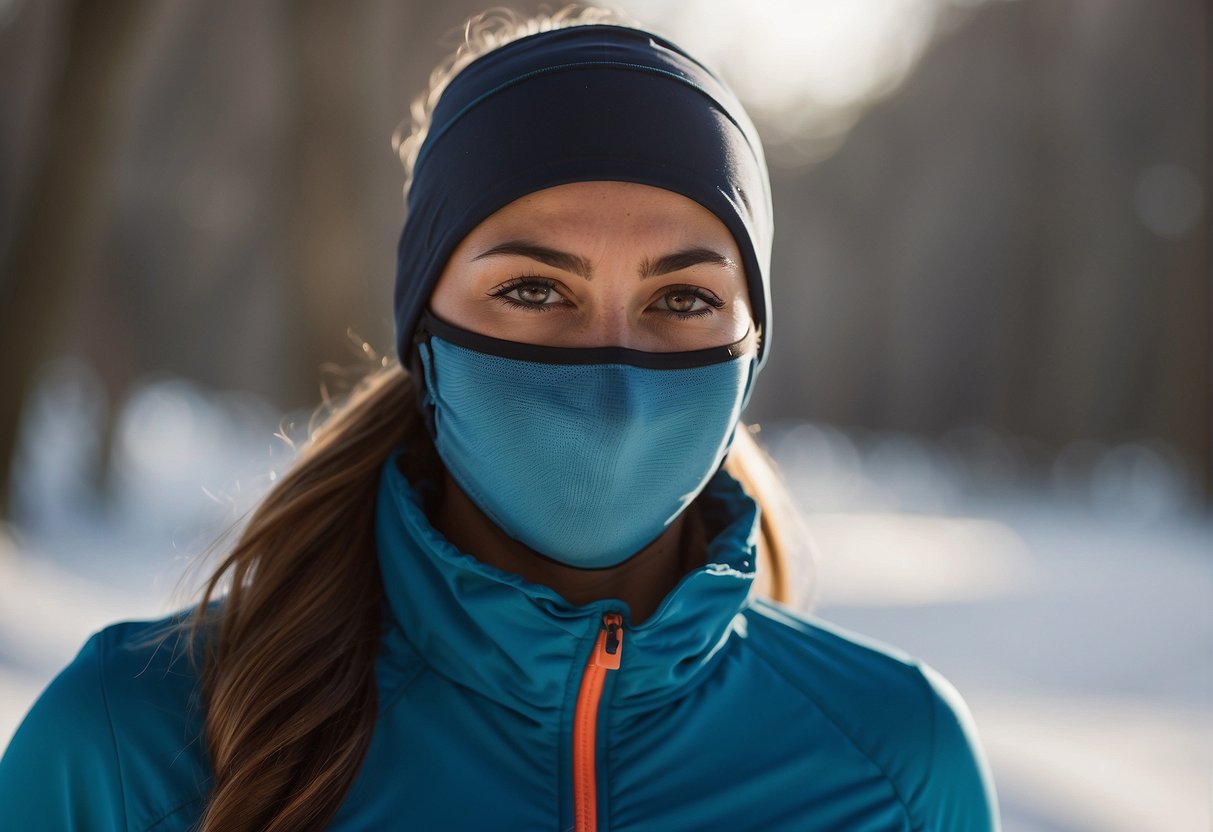
Proper maintenance of our running mask ensures protection and comfort in cold weather. Here’s how to keep ours in the best shape for everyday use.
Cleaning and Storage
Cleaning:
- After each use: Gently hand wash the mask with a mild soap and lukewarm water.
- Drying: Air dry by laying the mask flat or hanging it in a well-ventilated area. Avoid high heat, which can compromise the mask’s materials and fit.
Storage:
- Ensure the mask is completely dry before storing.
- Store in a cool, dry place away from direct sunlight to prevent material degradation.
When to Replace Your Mask
We must periodically assess our mask for signs of wear and tear. Here’s what to look for:
- Elasticity: If the mask’s fit becomes loose and no longer seals well against our face, it’s time for a new one.
- Material integrity: Check for thinning material or holes, especially around the mouth area, which could reduce the mask’s effectiveness.
- Overall wear: A good pair of running masks may last a considerable amount of time, but if the mask shows extensive signs of wear, it no longer provides the value we need.
Adhering to these guidelines ensures that our cold-weather running experience is safe, comfortable, and enjoyable.
Conclusion
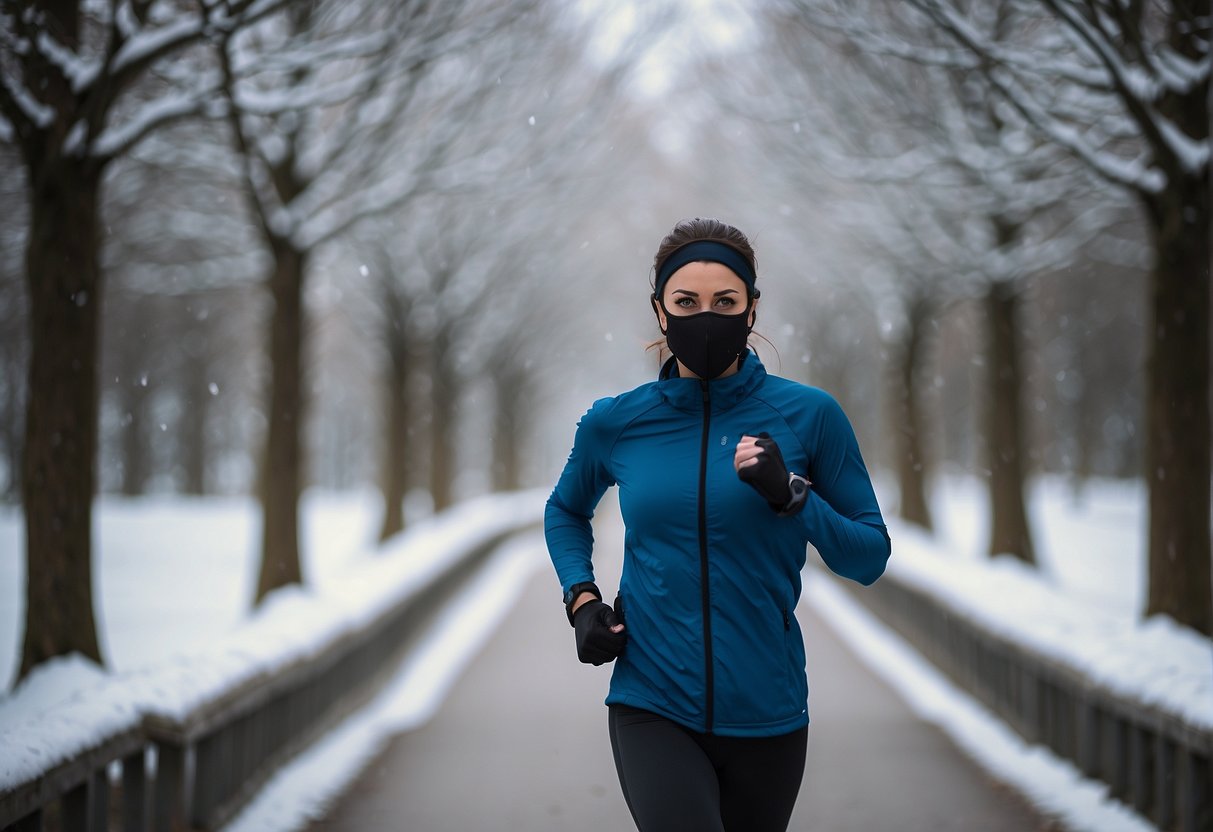
This article discusses the significance of wearing a mask to maintain respiratory comfort and performance for runners in cold weather.
Final Thoughts on Runners Masks for Cold Weather
We’ve established the importance of a cellulose-fabric face mask in reducing cold-induced respiratory issues during exercise. Considering exercise performance in cold weather, we have seen that protecting the airways can contribute to a more comfortable running experience. Evidence points out that a breathing mask can attenuate airway responses to cold air, supporting our recommendation for their use. Our examination of relevant studies, including one that explored the effectiveness of a breathing mask, underlines our stance on this matter.
As avid runners ourselves, we understand the balance between protection and performance. Masks should be breathable, fit well to prevent fogging of glasses, and must allow sufficient airflow during high-intensity activities. We have provided insights into how different coverings can impact performance and safety, and we stay abreast of ongoing research that could further inform our choices and recommendations.

